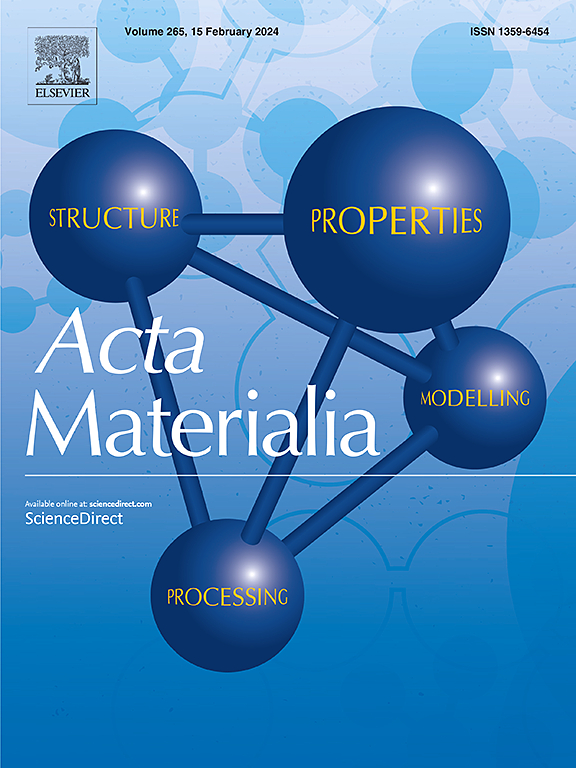Crystal symmetry-driven structural design for enhanced thermoelectric performance in lead-free cubic GeTe
IF 9.3
1区 材料科学
Q1 MATERIALS SCIENCE, MULTIDISCIPLINARY
引用次数: 0
Abstract
GeTe-based materials have emerged as promising candidates for medium-temperature thermoelectric (TE) applications. However, their phase transition near ∼700 K significantly degrades mechanical properties. In this study, we present a novel approach to stabilize the cubic rock-salt phase of lead-free GeTe at room temperature through co-doping with Tb and Sb, which completely solves the phase transition problem. Tb substitution at Ge sites not only alters the valence band structure but also promotes the formation of orthorhombic Tb2Te3, effectively reducing the c/a lattice ratio. Simultaneously, Sb doping optimizes the carrier concentration, enhances band convergence, and suppresses the stereochemical activity of Ge2+ 4s2 lone pair electrons, thereby improving the overall symmetry of GeTe. The introduction of hierarchical nano- and meso-structures, including nanoprecipitates (e.g., solid-solution point defects, Ge, Tb2Te3, and Sb2Te3) and an increased density of grain boundaries, further augments the material's performance. As a result, the optimized composition, Ge0.89Tb0.01Sb0.10Te, achieves a peak ZT of ∼2.0, an average ZT (ZTavg) of ∼1.24, a theoretical conversion efficiency of ∼16.50%, and a Vickers hardness of ∼203.16 Hv. This study demonstrates that inducing orthorhombic structure and manipulating lone-pair electrons can effectively enhance the crystal symmetry of lead-free GeTe-based materials, offering valuable insights for the development of high-performance cubic-phase GeTe materials.


提高无铅立方锗热电性能的晶体对称驱动结构设计
gete基材料已成为中温热电(TE)应用的有前途的候选者。然而,它们在~ 700k附近的相变会显著降低TE和机械性能。在这项研究中,我们提出了一种在室温下通过与Tb和Sb共掺杂来稳定无铅GeTe的立方岩盐相的新方法,彻底解决了相变问题。Ge位点的Tb取代不仅改变了价带结构,而且促进了正交Tb2Te3的形成,有效地降低了c/a晶格比。同时,Sb掺杂优化了载流子浓度,增强了能带收敛,抑制了Ge2+ 4s2孤对电子的立体化学活性,从而提高了GeTe的整体对称性。分层纳米和细观结构的引入,包括纳米沉淀物(例如,固溶点缺陷,Ge, Tb2Te3和Sb2Te3)和晶界密度的增加,进一步增强了材料的性能。结果表明,优化后的组合物Ge0.89Tb0.01Sb0.10Te的峰值ZT为~ 2.0,平均ZT (ZTavg)为~ 1.24,理论转换效率为~ 16.50%,维氏硬度为~ 203.16 Hv。该研究表明,诱导正交特性和操纵孤对电子可以有效地增强无铅GeTe基材料的晶体对称性,为高性能三相GeTe材料的开发提供了有价值的见解。
本文章由计算机程序翻译,如有差异,请以英文原文为准。
求助全文
约1分钟内获得全文
求助全文
来源期刊

Acta Materialia
工程技术-材料科学:综合
CiteScore
16.10
自引率
8.50%
发文量
801
审稿时长
53 days
期刊介绍:
Acta Materialia serves as a platform for publishing full-length, original papers and commissioned overviews that contribute to a profound understanding of the correlation between the processing, structure, and properties of inorganic materials. The journal seeks papers with high impact potential or those that significantly propel the field forward. The scope includes the atomic and molecular arrangements, chemical and electronic structures, and microstructure of materials, focusing on their mechanical or functional behavior across all length scales, including nanostructures.
 求助内容:
求助内容: 应助结果提醒方式:
应助结果提醒方式:


